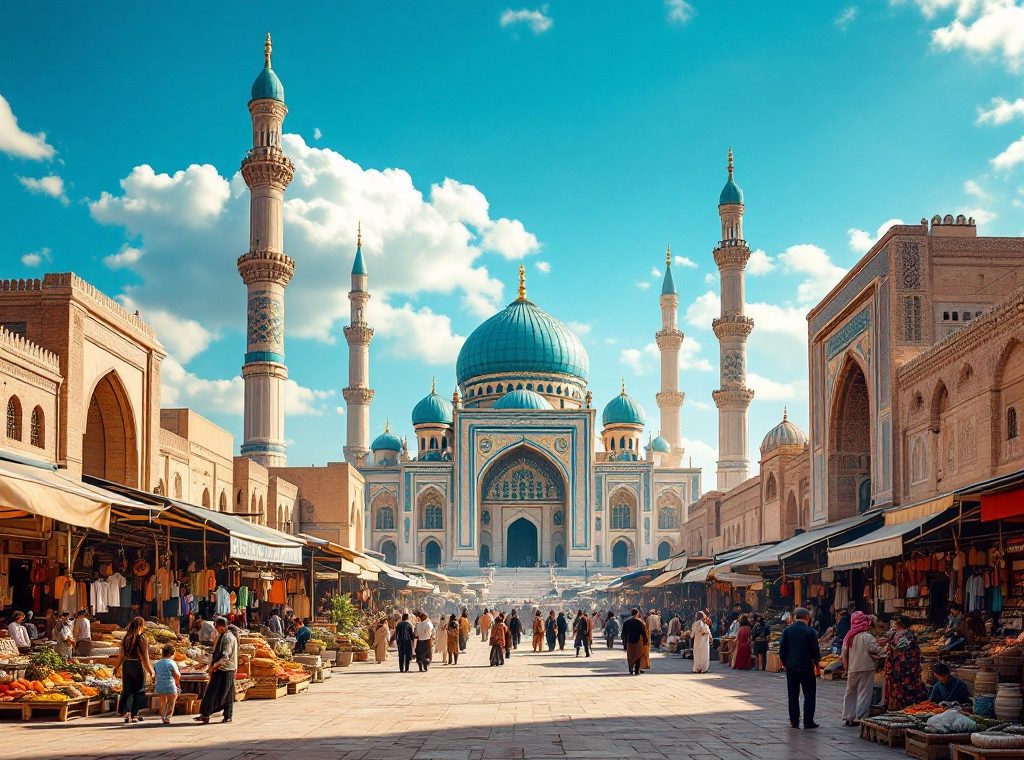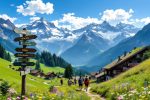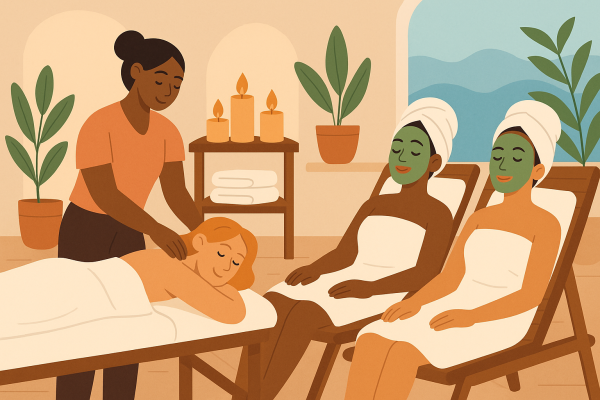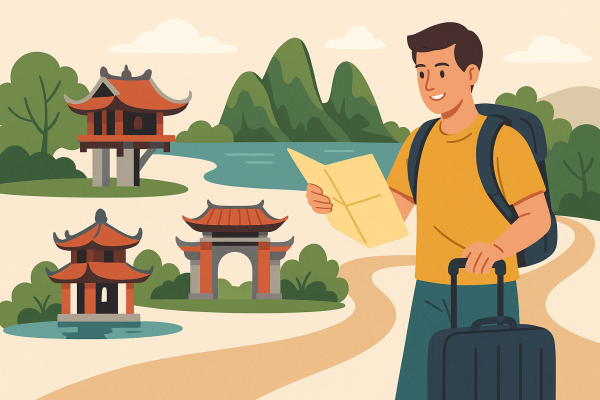Which Cultural Attraction Should You Visit on a Tour of Central Asia?
Journey through the historical Silk Road cities of Samarkand, Bukhara, and Khiva! Explore breathtaking mosques, bustling bazaars, and ancient madrasas. Discover UNESCO World Heritage sites, experience vibrant cultures, and witness the architectural marvels of Central Asia. Plan your adventure today and unlock the secrets of this captivating region!
Important information
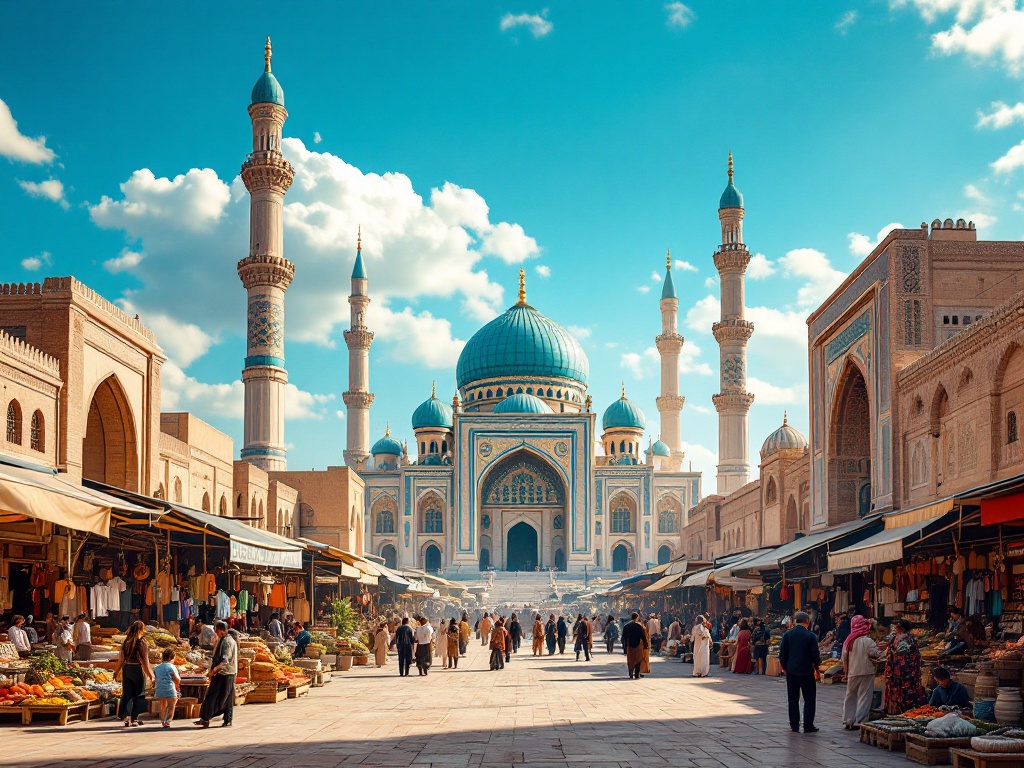
- Central Asia’s historical cities, especially Samarkand, Bukhara, and Khiva, were vital Silk Road hubs, showcasing stunning Islamic architecture and rich cultural heritage.
- Spring and autumn (April-June & September-October) are ideal times to visit Central Asia for pleasant weather.
- Russian is widely spoken and serves as a useful common language across the region.
- Visa requirements differ; Uzbekistan, Kazakhstan, and Kyrgyzstan often offer visa-free entry, while Tajikistan and Turkmenistan typically require visas.
- Dress modestly, respect local customs, stay hydrated, use reliable transport, and inform your bank of your travel plans for a smooth trip.
Key Cultural Attractions to Visit on a Tour of Central Asia
Journey through the heart of Central Asia, exploring the culturally rich cities of Samarkand, Bukhara, and Khiva. These cities are renowned for their historical significance and stunning architecture.
Samarkand
Discover the breathtaking mosques and mausoleums of Samarkand, showcasing the city’s rich history and architectural prowess.
Bukhara
Explore the ancient madrasas and bustling markets of Bukhara, offering a glimpse into the city’s vibrant past and present.
Khiva
Wander through the beautifully preserved Silk Road city of Khiva, a testament to its historical importance and enduring charm.
Embark on a journey through these captivating cities and delve into the diverse heritage of Central Asia. Each city offers a unique story, waiting to be unveiled.
Samarkand: A UNESCO World Heritage Site
Samarkand, a UNESCO World Heritage site since 2001, holds a captivating history as a vital Silk Road hub. For centuries, this dynamic city fostered trade and cultural exchange. Famous for its magnificent Islamic architecture, Samarkand showcases breathtaking landmarks such as Registan Square. Admire the impressive madrasas adorned with elaborate tilework and vibrant aquamarine domes. The city’s distinctive architectural style seamlessly blends Persian and Islamic influences, further enhanced by Turkic and Arabic designs. Once the capital of Tamerlane’s vast empire, Samarkand’s historical tapestry includes significant sites like the Shah-i-Zinda necropolis.
The Historical Significance of Bukhara
Bukhara, a vital Silk Road hub, prospered for centuries as a dynamic trading center and cultural melting pot. Islamic scholarship flourished, shaping the city’s magnificent architecture. Mosques, madrasas, and the impressive Ark Fortress remain as monuments to this rich and diverse history. Bukhara’s heritage is truly remarkable.
Khiva: The Preserved Jewel of Uzbekistan
Khiva, a UNESCO World Heritage site in Uzbekistan, is a remarkably preserved Silk Road city. The Ichan Kala, its ancient citadel, is a striking vision of mosaic tiles, reflecting Khiva’s bustling history as a trade hub. Narrow streets weave through the city, while minarets pierce the sky. Grand palaces, such as Tash-Khauli, echo with stories of bygone eras.
Unforgettable Experiences Along the Silk Road
The Silk Road profoundly shaped Central Asia, transforming it into a vital trade artery. Cities like Samarkand and Bukhara flourished as major commercial hubs, connecting diverse cultures and fostering a unique heritage still visible today. Travelers can still marvel at the stunning architecture and experience the vibrant traditions, a testament to the Silk Road’s enduring legacy. This influence is woven into the region’s buildings, cuisine, and customs. The Aral Sea and Fergana Valley offer a different perspective, revealing a more nuanced environmental history of Central Asia.
Samarkand and Bukhara
These cities were key hubs along the Silk Road, attracting merchants and travelers and shaping the region’s cultural landscape. Today, visitors can explore historical sites and experience the vibrant local traditions.
Aral Sea and Fergana Valley
These areas offer a different perspective on Central Asia, revealing a more nuanced environmental history.
The Silk Road transformed Central Asia into a vital trade route.
Cities like Samarkand and Bukhara flourished as major commercial centers.
The Silk Road facilitated the exchange of goods, ideas, and technologies.
The Silk Road’s influence is visible in the region’s architecture, cuisine, and customs.
The Aral Sea and Fergana Valley reveal a nuanced environmental history.
The Role of Central Asia in Trade and Cultural Exchange
Central Asia, situated along the Silk Road, became a vital trading hub. It was a crossroads where goods, ideas, and cultures from various civilizations met. Cities like Samarkand and Bukhara thrived as centers of commerce and cultural exchange.
Islams’ Architectural Marvels at Registan Square
Registan Square is a breathtaking display of Islamic architecture, anchored by three magnificent madrasahs: Ulugh Beg, Sher-Dor, and Tilya-Kori. Each boasts intricate tilework, soaring domes, and grand arches, showcasing the pinnacle of Timurid design. These impressive structures with intricate details and vibrant colors create a mesmerizing view. The square’s beauty is further enhanced by the rhythmic patterns and geometric designs, a testament to the rich artistic and cultural heritage of the region.
Visiting the Vibrant Bazaars, Mosques, and Minarets
Central Asian bazaars are a vibrant spectacle, overflowing with textiles, spices, and local crafts. Mosques, like the breathtaking Bibi-Khanym Mosque in Samarkand, feature intricate tilework and impressive domes. Piercing the sky, minarets such as Bukhara’s Kalyan Minaret stand as testaments to Islamic devotion and architectural ingenuity. These structures reflect the region’s rich history and cultural heritage.
Unique Destinations and Hidden Gems
In Turkmenistan, the Darvaza Gas Crater, nicknamed the “Door to Hell,” blazes dramatically in the Karakum Desert. Ashgabat, the nation’s capital, captivates with its striking blend of modern and historical architecture, particularly its renowned white marble buildings and unique cultural attractions. Museums throughout the city showcase Turkmenistan’s rich heritage.
Kazakhstan offers diverse landscapes, from sweeping steppes to majestic mountains. Almaty, a cosmopolitan hub, seamlessly blends modern architecture with stunning natural beauty. In Turkestan, the Mausoleum of Khoja Ahmed Yasawi, a UNESCO World Heritage site, stands as a testament to its historical and architectural significance.
Tajikistan presents unique adventures, including driving the challenging yet breathtaking Pamir Highway. Trekking through the Pamir Mountains offers another exhilarating experience. Exploring the Wakhan Valley, bordering Afghanistan, provides a thrilling glimpse into this fascinating region.
Darvaza Gas Crater: Turkmenistan’s Enigmatic Attraction
Turkmenistan’s Karakum Desert is home to a fiery spectacle nicknamed the “Door to Hell,” or sometimes the “Gates of Hell”—officially, the Darvaza Gas Crater. Soviet geologists inadvertently created this blazing landmark in 1971 when they ignited a collapsed natural gas field. The crater now burns continuously, its glow particularly mesmerizing at night, drawing visitors worldwide. Imagine camping beneath the stars with this unique phenomenon as your backdrop.
The Rich Culture and Heritage of Ashgabat
Ashgabat, Turkmenistan’s capital, boasts stunning white marble architecture, museums, and monuments. Iconic structures like the Neutrality Monument and Turkmenbashi Palace showcase the country’s rich history. Visitors can delve into Turkmen culture, admiring traditional carpets and experiencing the vibrancy of folk music. Beyond Ashgabat, the ancient city of Merv, a UNESCO World Heritage site, reveals more of Turkmenistan’s past. Exploring Merv’s ruins offers a glimpse into a once-thriving civilization.
Planning Your Central Asian Cultural Adventure
Journey through the captivating cultural tapestry of Central Asia. Explore ancient Silk Road cities in Uzbekistan, such as Samarkand, Bukhara, and Khiva, each renowned for stunning architecture and rich history. Discover the breathtaking Song Kul lake in Kyrgyzstan or traverse the Pamir Highway in Tajikistan. Witness Turkmenistan’s Darvaza gas crater, known as the “Door to Hell.” Experience the modern contrast in capitals like Astana, Kazakhstan.
Plan Your Adventure
Tailor your itinerary to your interests and available time. A shorter trip might focus on one or two countries, allowing deeper cultural immersion.
Best Time to Visit
Spring and autumn (April-June & September-October) offer the most pleasant weather.
Understanding the Silk Road’s history will enrich your journey, adding depth and context to this remarkable cultural experience.
Essential Tips for Touring Central Asia
Planning a trip to Central Asia? Here’s your essential guide.
Visa Regulations
Visa requirements vary across Central Asia. Uzbekistan, Kazakhstan, and Kyrgyzstan offer visa-free entry to many nationalities. However, Tajikistan and Turkmenistan typically require visas, so check the specific regulations based on your nationality.
Language
While each country has its own language, Russian is widely understood across the region and serves as a helpful lingua franca.
Dress Code
Dress modestly, especially when visiting religious sites. Women may want to carry a headscarf. Avoid shorts and revealing attire.
Local Customs
Remove your shoes before entering homes. Be mindful of public displays of affection, which are generally discouraged. Bargaining is common in markets; start low and be prepared to walk away.
Health
Stay hydrated by drinking bottled water. Choose reputable eateries to minimize health risks.
Transportation
Taxis and private cars are reliable transportation options. Public transport is available but can be less convenient. Research common tourist traps and scams. Be cautious with overly friendly strangers.
Finances
Notify your bank of your travel dates to avoid any card issues.
First-Time Visitors
For a safe and convenient experience, consider joining a small group tour.
Recommended Small Group Tours and Authentic Destinations
Discover the heart of Central Asia with a small group tour, immersing yourself in the local culture. Experience authentic interactions, like homestays in rural villages and hands-on cooking classes, creating lasting memories. Interact with local artisans and discover hidden gems far from the tourist crowds. These intimate tours offer a richer travel experience, greater flexibility, and personalized itineraries, allowing you to forge deeper connections with your fellow travelers. Embark on an unforgettable Central Asian adventure.

